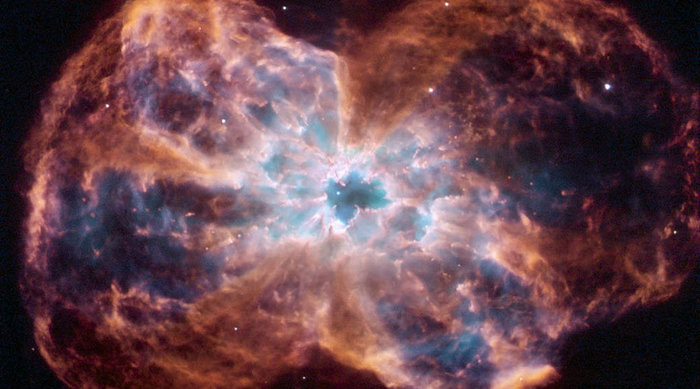Death of a star: Hubble telescope captures amazing image of celestial body’s demise

The gas formed a cocoon around the star’s remaining core while ultraviolet light from the dying star makes the material glow.
The white dot at the center of the image is the burnt out star, commonly known as a white dwarf, and is one of the hottest white dwarfs known to grace the Milky Way with a surface temperature of over 360,000 degrees Fahrenheit (200,000 degrees Celsius), according to NASA.
A white dwarf is what low or medium mass stars, including the Sun, become after they have exhausted their hydrogen fuel.
These celestial relics are called planetary nebulae, named so because they resembled distant planets Uranus and Neptune when seen through small telescopes during the 18th and 19th centuries.
The chaotic appearance of this particular stellar suggests it discarded its mass periodically, emitting material in different directions during each outburst. The long, dark streaks pointing away from the star are clouds of dust.















-1741770194.jpg&h=190&w=280&zc=1&q=100)






-1741765030.jpg&h=190&w=280&zc=1&q=100)
























